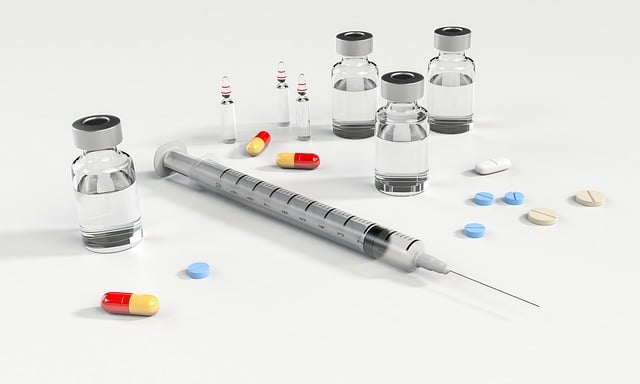In South Africa, Medical Aid and Health Insurance are distinct yet crucial for healthcare access. Medical Aid, a private scheme, offers comprehensive long-term coverage for various treatments through regular premiums, while Health Insurance provides transactional protection against specific events like hospitalisation. Understanding these differences is vital for aligning coverage with personal needs. Individuals should consider budget, age, health, and family to choose between these options, evaluating co-pays, provider networks, and waiting periods. Effective claim management involves reviewing policy documents, obtaining pre-authorizations, submitting claims, tracking status, and ensuring timely payments.
Understanding Medical Aid vs. Health Insurance in South Africa is essential for navigating healthcare costs. This comprehensive guide breaks down these key components of healthcare coverage, clarifying their differences and benefits. We explore various medical aid schemes and dissect health insurance coverage, helping you choose the right plan. Learn how to navigate claims and payments with ease, ensuring peace of mind when it matters most.
- What is Medical Aid and Health Insurance in South Africa?
- Key Differences Between Medical Aid and Health Insurance
- Types of Medical Aid Schemes Available
- Understanding Health Insurance Coverage and Benefits
- Choosing the Right Plan: Factors to Consider
- Navigating Claims and Payments: A Step-by-Step Guide
What is Medical Aid and Health Insurance in South Africa?

In South Africa, both Medical Aid and Health Insurance play crucial roles in ensuring access to healthcare services. Medical Aid is a private, not-for-profit scheme that provides members with comprehensive medical coverage, including inpatient and outpatient care, maternity, dental, and other specialist services. It operates on a pre-pay model, where members contribute regular premiums to cover their medical expenses. Health Insurance, on the other hand, is a form of insurance policy that covers specific health-related costs, such as hospitalisation, surgery, and medication. This type of coverage is typically offered by employers or purchased individually, focusing on out-of-pocket expense protection.
Understanding the distinction between Medical Aid and Health Insurance is essential for South Africans seeking healthcare coverage. While Health Insurance provides financial protection against unexpected medical bills, Medical Aid offers a more comprehensive range of services and benefits, including routine check-ups, preventative care, and access to private hospitals. Knowing these differences helps individuals make informed decisions about their healthcare needs and choose the best option that aligns with their circumstances.
Key Differences Between Medical Aid and Health Insurance

In South Africa, understanding the nuances between Medical Aid and Health Insurance is crucial for making informed decisions about your healthcare. While both concepts serve the purpose of covering medical expenses, they operate differently. Medical Aid is a long-term savings plan where members contribute to a fund that pays for specified medical services. It’s often structured as a not-for-profit organisation, focusing on comprehensive coverage for its members. On the other hand, Health Insurance is more transactional, where individuals or companies pay a premium to an insurance company, which in turn provides coverage for specific treatments or conditions. The key difference lies in their funding models and flexibility; Medical Aid typically offers broader coverage with longer-term benefits, while Health Insurance provides more flexible short-term solutions.
When considering Medical Aid Vs Health Insurance, members of Medical Aid usually enjoy access to a network of healthcare providers and hospitals, often at negotiated rates. This ensures affordability and continuity in care. In contrast, Health Insurance policyholders may face a broader range of choices but could encounter out-of-pocket expenses like deductibles and co-payments. The choice between the two ultimately depends on individual needs, budget, and long-term healthcare goals.
Types of Medical Aid Schemes Available

In South Africa, individuals have a variety of options when it comes to managing their healthcare expenses through either Medical Aid or Health Insurance. The key difference between the two lies in their structure and coverage. Medical Aid is typically provided by employers or purchased privately, focusing on out-of-hospital care like consultations, treatments, and surgeries. It’s a pre-paid health service that covers specified medical procedures, with members paying monthly contributions to access this network of healthcare providers.
On the other hand, Health Insurance is more flexible and allows individuals to choose their preferred healthcare providers. This type of insurance covers both in-hospital and out-of-hospital care, including hospital stays, doctor’s visits, and specialist treatments. While Health Insurance offers broader coverage, it’s important to compare policies carefully as some may have exclusions or limitations based on pre-existing conditions or certain medical procedures. Understanding the distinctions between Medical Aid and Health Insurance is crucial when selecting a plan that aligns with your healthcare needs and financial capabilities in South Africa.
Understanding Health Insurance Coverage and Benefits

Understanding Health Insurance Coverage and Benefits
In South Africa, health insurance and medical aid schemes serve distinct purposes, with health insurance focusing on providing specific benefits to cover unexpected medical expenses, while medical aid plans typically offer a comprehensive range of healthcare services, including routine check-ups, hospital stays, and prescribed medications. The key difference lies in their structure: health insurance is often seen as a form of protection against unforeseen illnesses or accidents, offering various benefit packages that cater to different needs. In contrast, medical aid schemes tend to be more tailored to individuals’ long-term healthcare requirements, encompassing preventive care and ongoing treatment options.
When considering Medical Aid Vs Health Insurance, it’s crucial to align your choice with your personal healthcare needs. While health insurance provides valuable short-term coverage for unexpected events, medical aid plans offer a more sustainable solution by covering routine and specialist care, often at preferred rates through network providers. By understanding these distinctions, individuals can make informed decisions, ensuring they receive the most suitable healthcare protection for their circumstances.
Choosing the Right Plan: Factors to Consider

When choosing a plan, it’s crucial to understand the difference between medical aid and health insurance. Medical aid is typically offered by employers or purchased privately, covering specific medical services and often with a focus on preventive care. Health insurance, on the other hand, is more flexible and can be bought independently, offering broader coverage for various healthcare needs. Consider your age, general health, budget, and family situation when making this decision.
Factors to evaluate include co-pay amounts, network of service providers, scope of cover (inpatient vs outpatient), waiting periods, and additional benefits like mental health support or wellness programs. Comparing different plans will help ensure you select one that aligns with your healthcare needs and financial capabilities, providing the best value for your investment.
Navigating Claims and Payments: A Step-by-Step Guide

Navigating claims and payments is a crucial aspect of understanding medical aid vs health insurance in South Africa. Here’s a step-by-step guide to help you make sense of this process. Firstly, confirm your coverage by reviewing your policy documents, which outline what’s covered under your plan, including co-payments or deductibles. When a medical service is required, obtain all necessary approvals from your medical aid provider before visiting a healthcare facility. This ensures that the service is recognised and approved for payment.
After receiving treatment, submit your claim form to your medical aid or health insurance company, along with supporting documentation like receipts, prescriptions, and medical reports. Keep track of your claim’s status through the provider’s online portal or by contacting their customer service. Once approved, payments will be processed according to your policy terms, either directly to you or to the healthcare provider on your behalf.
When navigating South Africa’s healthcare landscape, understanding the distinctions between Medical Aid and Health Insurance is crucial. This comprehensive guide has illuminated their unique roles in ensuring access to quality health services. By grasping the key differences, types of medical aid schemes, benefits, and claims processes, individuals can make informed decisions when selecting coverage that best aligns with their needs. Whether prioritizing affordability, broad coverage, or specific healthcare services, knowing your options empowers you to choose the optimal Medical Aid vs Health Insurance plan for a healthier future.

